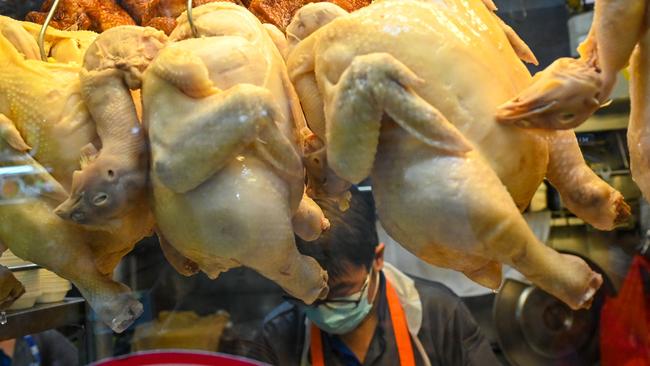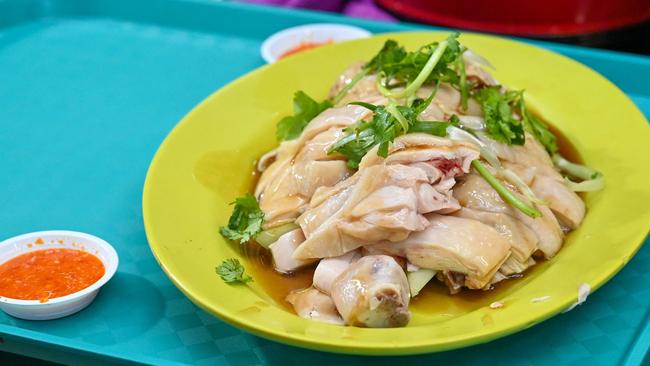Singapore chefs cry foul as Malaysia cuts chicken supply
Scramble to source supply as a inflation and food security move threatens a Singaporean staple: chicken rice.

Singapore without chicken rice would be like Italy without pizza or Britain without fish and chips. Quick, delicious and cheap, it is enjoyed at simple restaurants and street stalls across the city state: a plate of poached chicken and a bowl of fragrant rice, cooked in its stock.
But this month the most characteristically Singaporean of foods has come under an existential threat. Chefs are scrambling to source supplies after Malaysia announced an export ban on chickens. Singapore, a cramped island of 5.5 million people with scant room for agriculture, depends on its larger neighbour for a third of its birds.
The sudden announcement has driven up the price of chicken rice from $AU3 to $AU3.60 as restaurateurs deprived of fresh fowl struggle to make use of stocks of inferior frozen chicken.
Governments around the world, alarmed by rising prices, are restricting exports of key commodities in an attempt to secure their own food security and chickens are only the beginning.

As Lee Hsien Loong, the Singaporean prime minister, said: “This time it is chicken, next time it may be something else. We have to be prepared for this. It’s a very unsettled world and inflation is a problem — cost of living is a problem — but in the scheme of things many more disruptive things can happen than just some price adjustments. And we are seeing some of that now.”
In Malaysia prices have been rising because of an increase in the cost of feed: one of many global consequences of the war in Ukraine. The ban covers the 3.6 million chickens exported every month in the form of live poultry, whole carcasses, refrigerated and frozen meat, chicken parts and chicken-based products. It will continue indefinitely until domestic prices and production stabilise. “The government’s priority is our own people,” Ismail Sabri Yaakob, the Malaysian prime minister, said.
What Malaysia has done for chickens, Kazakhstan, Egypt and Turkey have done for cooking oil.
At the end of April Indonesia, the world’s largest producer of palm oil, suspended its export for three weeks. Vietnam introduced a temporary block on exports of rice.
The most consequential example of “food nationalism” is India, the world’s second most populous country. In May, after a heatwave that damaged the domestic crop, Narendra Modi’s government banned wheat exports. India is the world’s second-largest seller of wheat. The largest exporter is Ukraine, whose own crop is trapped by the Russian blockade of its Black Sea ports. A fortnight later Modi restricted the export of sugar.
“Bread riots” have been a source of terror to rulers since the French Revolution. The last time the world experienced food nationalism on today’s scale was in the financial crisis of 2007 and 2008. The civil unrest that it provoked in poor African nations contributed significantly to the Arab Spring uprisings in places such as Algeria and Tunisia. The notion of Chicken Rice Riots sounds fanciful, but is no longer completely unthinkable.
THE TIMES



To join the conversation, please log in. Don't have an account? Register
Join the conversation, you are commenting as Logout